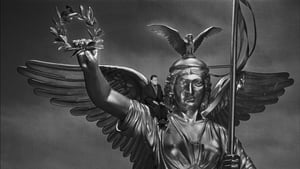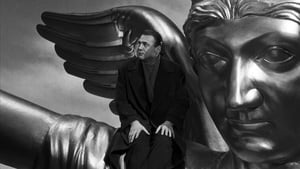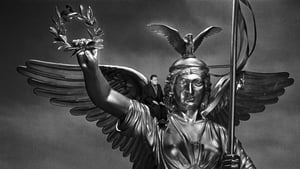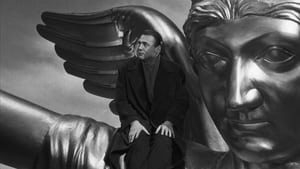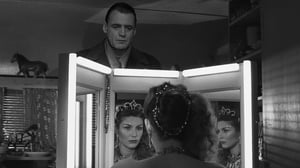Video Sources 0 Views

Synopsis

Prepare to be moved by Wings of Desire, a poetic and profound romantic fantasy film from 1987, now beautifully colorized to enhance its emotional depth and visual splendor. Directed by Wim Wenders and featuring a captivating performance by Bruno Ganz, this film explores themes of love, sacrifice, and the human condition against the backdrop of a divided Berlin. Perfect for cinephiles and those seeking a thought-provoking and visually stunning experience, this HD download offers a fresh perspective on a timeless masterpiece.
Wings of Desire follows the journey of two angels, Damiel and Cassiel, who watch over the city of Berlin, listening to the thoughts and feelings of its inhabitants. Invisible and silent observers, they witness the joys and sorrows of human life, offering comfort to those in distress.
Damiel, however, begins to long for something more. He becomes fascinated by a lonely trapeze artist named Marion, drawn to her beauty, her vulnerability, and her passion for life. As he observes her, Damiel’s desire to experience the world as a human grows stronger, leading him to make a momentous decision: to renounce his immortality and become mortal.
His transformation is a journey of discovery, as he experiences the sensations of the physical world for the first time – taste, touch, color, and emotion. He also learns about the pain and suffering that come with being human. Guided by a former angel, actor Peter Falk, Damiel navigates his new existence and seeks to find Marion, hoping to connect with her and share the experience of human love.
Meanwhile, Cassiel continues his watch over Berlin, grappling with the challenges of his immortal existence and the complexities of the human world. The film culminates in a poignant encounter between Damiel and Marion, as they find solace and connection in each other’s arms, embracing the beauty and fragility of their newfound humanity. Wings of Desire is a powerful and moving exploration of what it means to be human, and the sacrifices we make for love and connection.
The film features a remarkable cast, each delivering unforgettable performances:
-
Bruno Ganz as Damiel
-
Solveig Dommartin as Marion
-
Otto Sander as Cassiel
-
Peter Falk as Himself
Wings of Desire transcends traditional genre classifications, blending elements of romantic fantasy, drama, and art film. It is a unique and poetic work that explores profound themes with sensitivity and visual artistry.
Released in 1987, Wings of Desire is deeply rooted in the historical context of a divided Berlin. The Berlin Wall looms large in the film, serving as a physical and symbolic barrier between East and West, and reflecting the separation and isolation experienced by many of the city’s inhabitants. The film captures the atmosphere of Berlin at a pivotal moment in history, as the Cold War began to thaw and the prospect of reunification loomed on the horizon. Wings of Desire is a testament to the resilience and spirit of the people of Berlin, and a celebration of the power of love and connection to overcome division and separation.
This colorized version of Wings of Desire has been carefully restored using state-of-the-art digital techniques, enhancing the film’s visual impact while preserving its original artistic vision. The colorization process involved a meticulous analysis of the film’s black and white footage, with careful consideration given to the color palette and the overall tone of each scene. The result is a stunning and immersive viewing experience that brings new life to this beloved classic. While debates about colorizing black and white films persist, it introduces these films to new audiences, ensuring that their legacy endures.
-
: Wim Wenders
-
: Wim Wenders, Peter Handke, Richard Reitinger
-
: Henri Alekan
-
: Road Movies Filmproduktion, Argos Films
-
: United Artists Classics
-
: 128 minutes
-
: MP4
-
: HD (1080p)
-
: Compatible with most devices, including smartphones, tablets, computers, and smart TVs.
Wings of Desire (1987) has been widely acclaimed as a cinematic masterpiece, praised for its poetic storytelling, its stunning visuals, and its profound exploration of the human condition. It has won numerous awards, including the Best Director prize at the Cannes Film Festival, and has been recognized as one of the greatest films of all time. Wings of Desire continues to resonate with audiences around the world, inspiring and moving viewers with its message of love, hope, and the enduring power of the human spirit.
-
: What is Wings of Desire about?
-
A: Wings of Desire is a romantic fantasy film about angels who watch over the city of Berlin, and one angel’s decision to become human for the love of a trapeze artist.
-
-
: Is Wings of Desire (1987) a well-known film?
-
A: Yes, Wings of Desire is widely regarded as a classic and has received international acclaim.
-
-
: Is this version of Wings of Desire colorized?
-
A: Yes, this version has been professionally colorized to enhance the viewing experience.
-
-
: What makes Wings of Desire interesting for classic film fans?
-
A: Wings of Desire is a visually stunning and emotionally resonant film that explores profound themes with sensitivity and artistry.
-
-
: What is the download format?
-
A: The download format is MP4, which is compatible with most devices.
-
-
: What resolution is the download?
-
A: The resolution is HD (1080p), providing a high-quality viewing experience.
-
Watch Wings of Desire Today!
